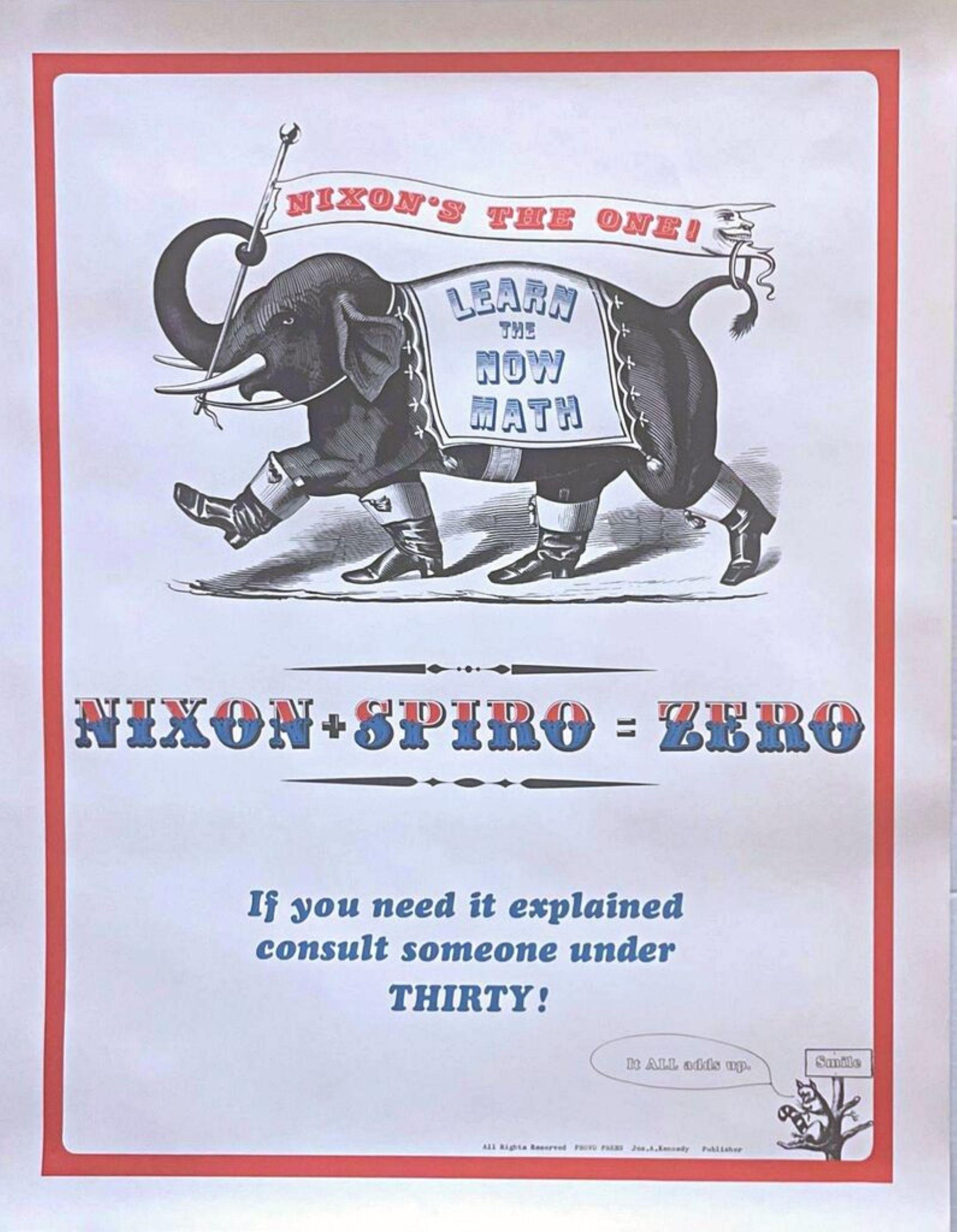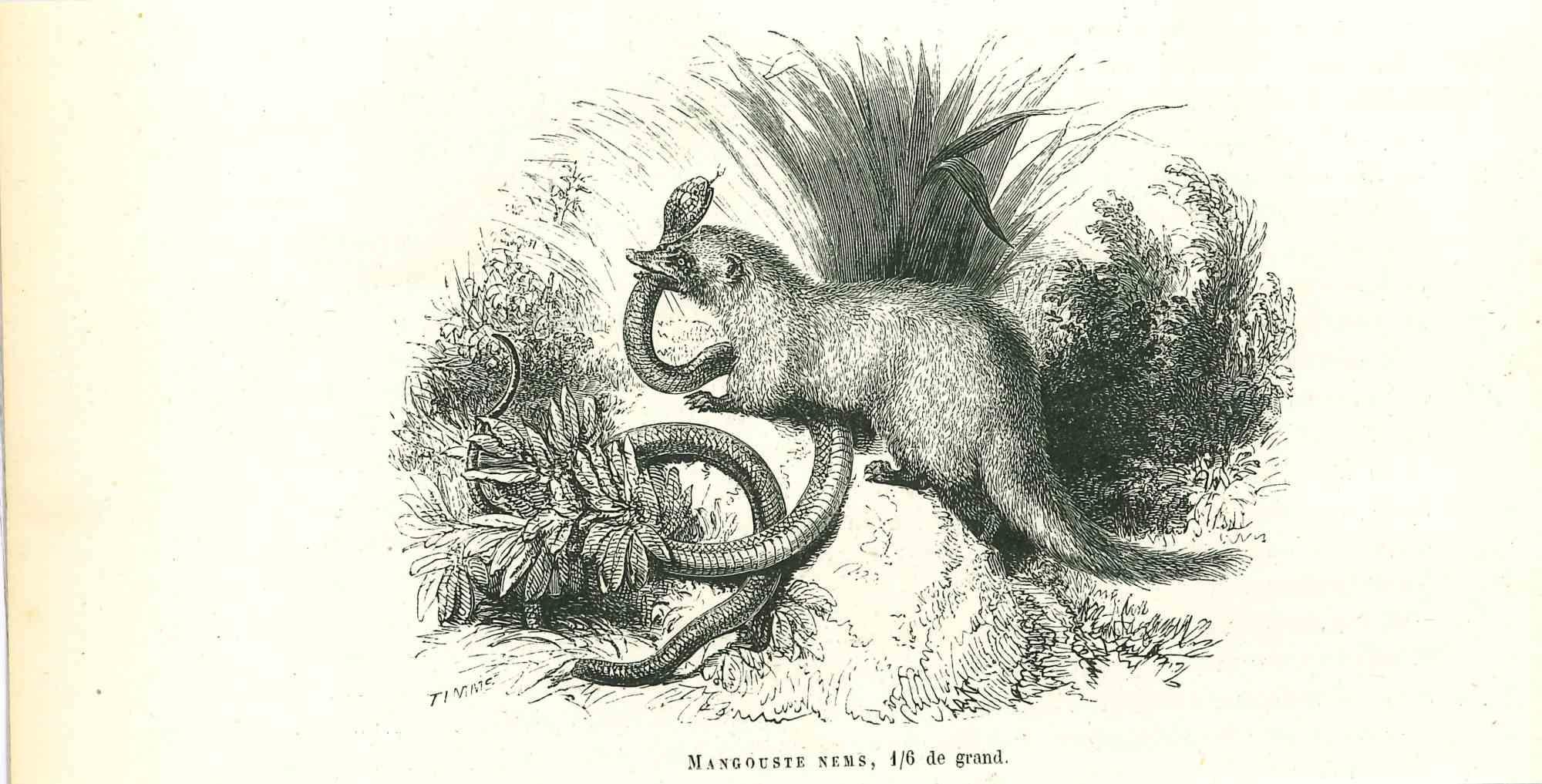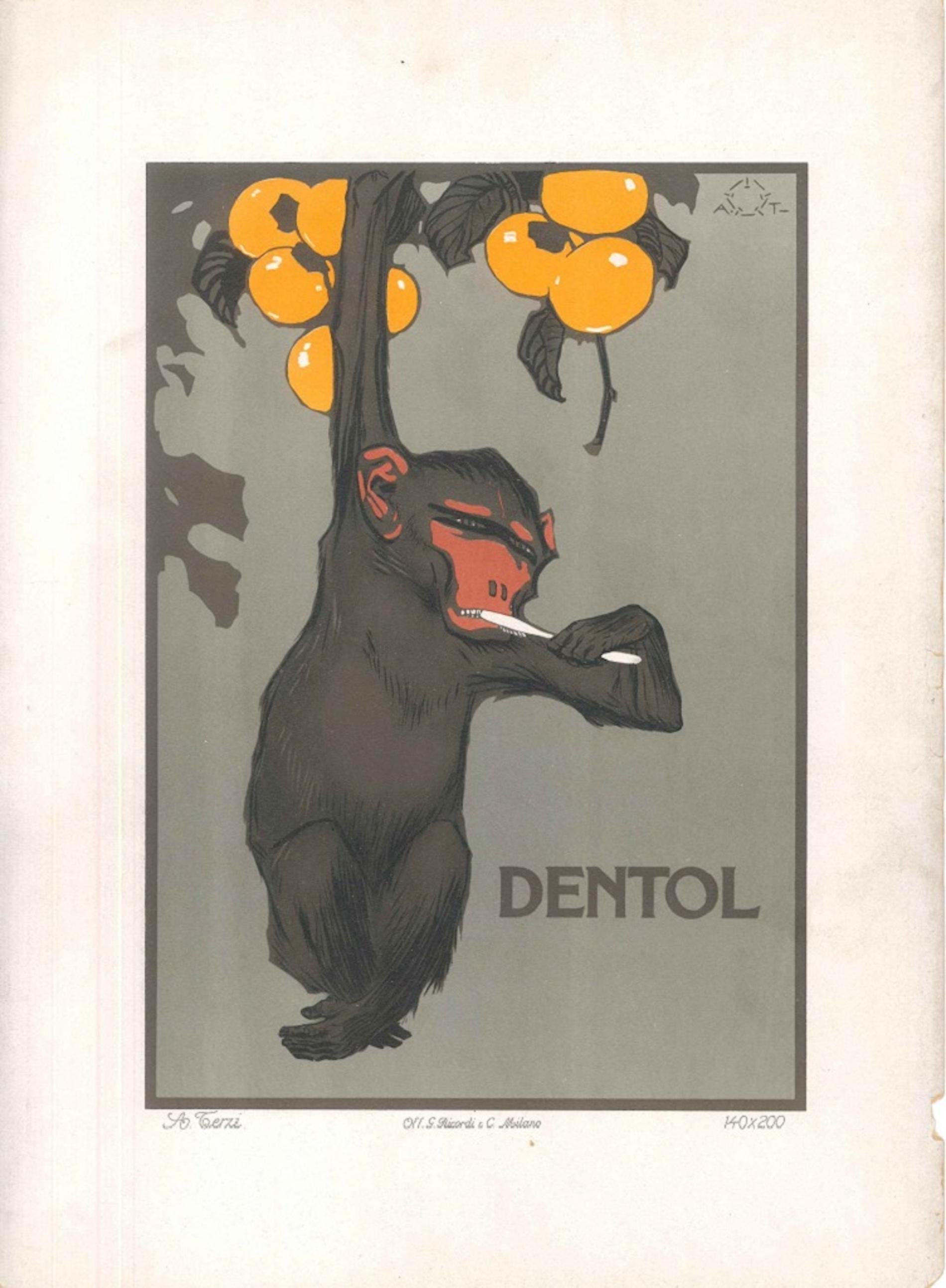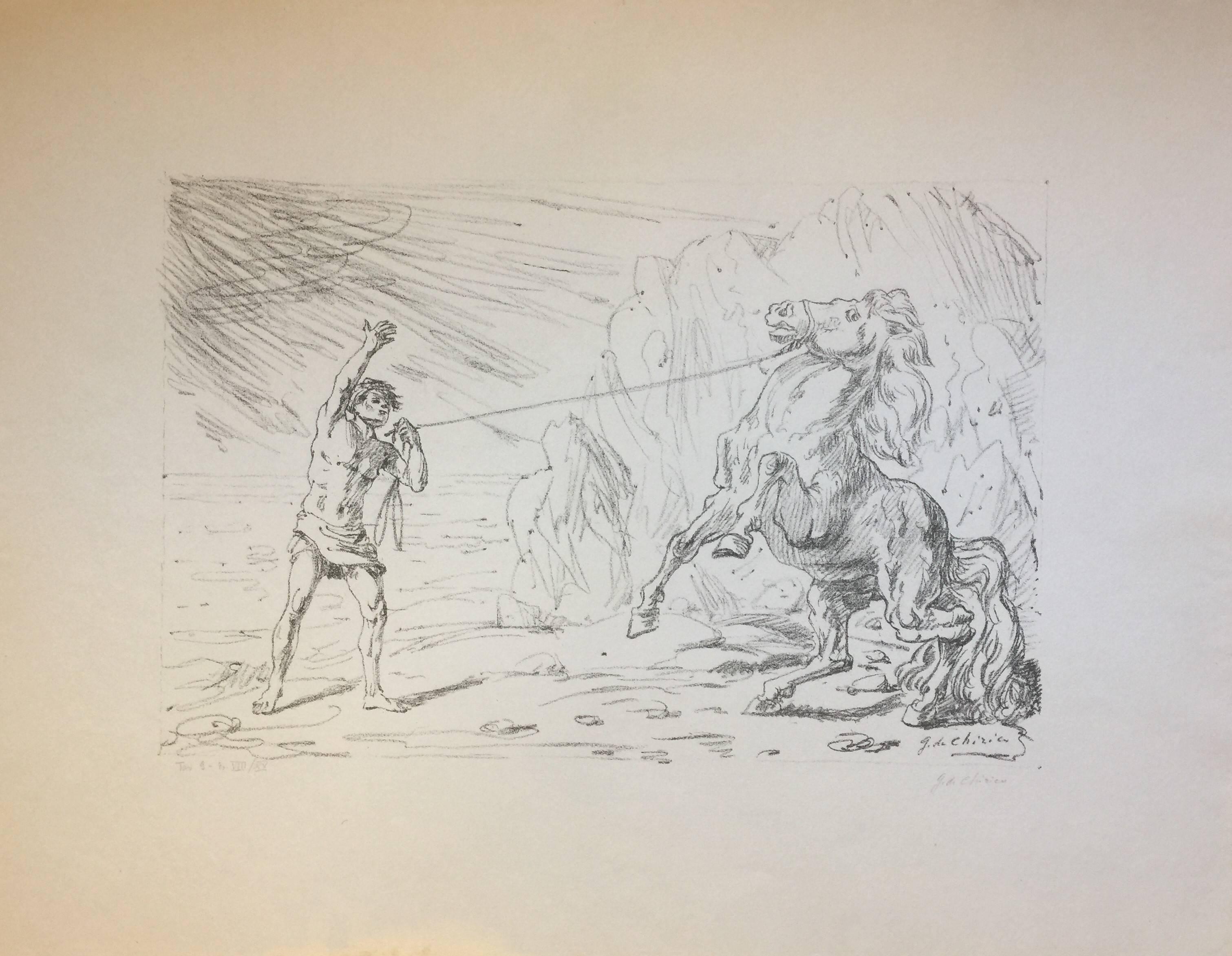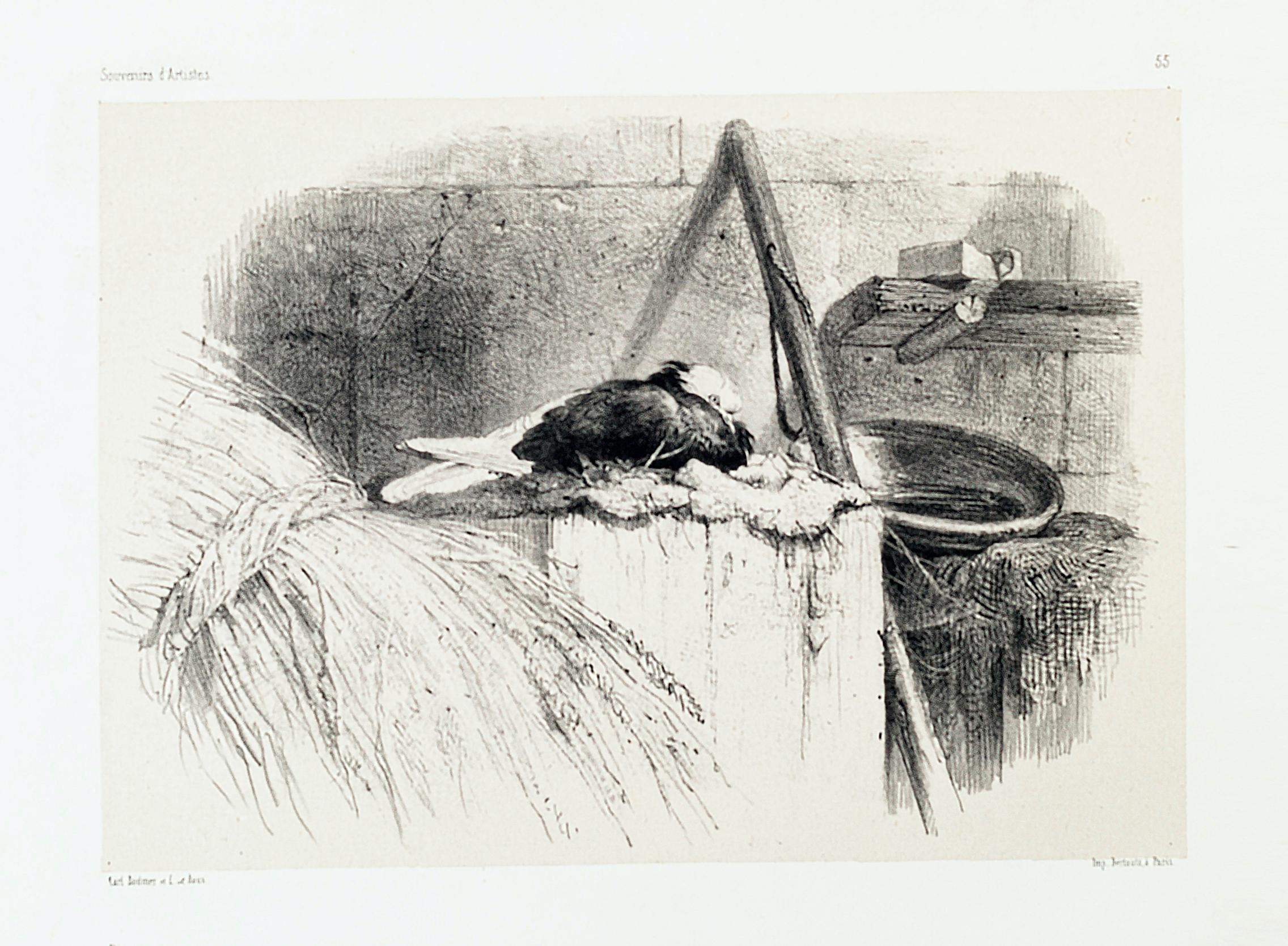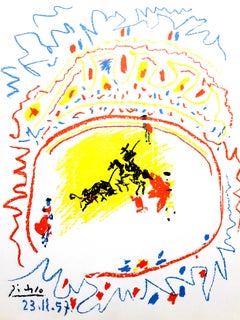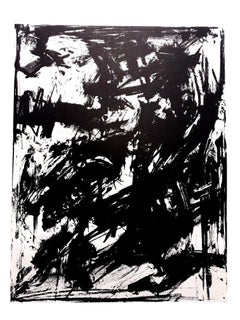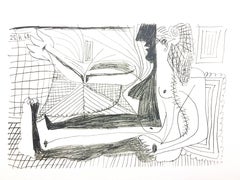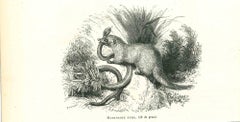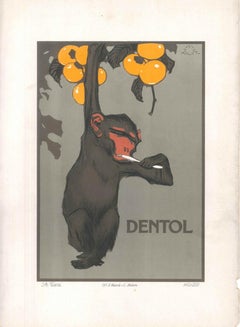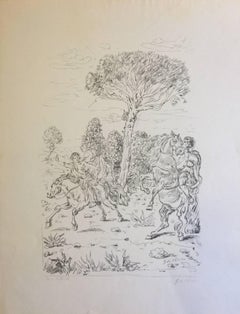Items Similar to Lithograph after Georges Braque
Want more images or videos?
Request additional images or videos from the seller
1 of 13
UnknownLithograph after Georges Braque1964
1964
About the Item
Lithograph after Georges Braque
From the deluxe art review, Derrière le Mirroir
1964
Printed signature
Dimensions: 38 x 28 cm
DLM No. 148, 1964
Edition: Foundation Maeght at Saint Paul
The father of Cubism
Three Cubist that distinguishes art historian periods were initiated and developed by Georges Braque: The Cubist Cézanne (1907-1909), Executive (1909-1912) and synthetic (1912-1922).
Post-Impressionist and fawn, Braque no longer adheres to the contingency of a decorative way or the other. Cézanne’s paintings exhibited at the Grand Palais during the retrospective of 1907 are a revelation: Cézanne sought and invented a pictorial language. In his footsteps, Braque went to the South with the reasons of the Master. He returned with Estaque landscapes and surprising Ciotat it keeps Cezanne geometric model and retains the “passages” continuity from one surface to another to create the sensation of “turning around” of the object represented. But he wants to go after the consequences of the vision of Cezanne. In his paintings Houses in L’Estaque (1908) it simplifies the volumes of houses, neglects detail by removing doors and windows: the plastic rhythm that builds the table. Large Nude , a masterpiece of the period, can be considered the first work of Cézanne cubism .
Systematizing and deepening Braque discoveries open the door analytical cubism. In 1909, his painting became more cerebral than sensual. The pattern is recreated in the two-dimensionality of the canvas, leaving aside any illusionistic perspective. In Still Life with Violin, objects are analyzed facets according to their characteristic elements, each facet referring to a particular view of the object. There are so many facets of points selected view: Table reflects the knowledge of the object and the ubiquity of the eye. Moreover, Braque is looking for the essence of the objects in the world rather than their contingency, which explains the absence of light source and use of muted colors (gray, ocher), contingent aspects of the object . But formal logic has stepped facets, erased any anecdote to the object and ultimately led to his painting a hermetic more marked on the edge of abstraction (see the series of Castle Roche-Guyon ).
Braque, anxious to keep the concrete and refusing at all costs that the logic of Cubism takes the paintings to abstract, reintroduced signs of reality in his paintings in 1912 marks the beginning of Synthetic Cubism. Historians speak of “signs of real” rather than reality because what interests Braque, this is not to put reality into a table, but to create a painting which, by its language, refers to the real. To do this, he invented two major techniques XX th century inclusions and contributions. The inclusions consist of painting objects that have no real depth, materials (wallpaper in Nature morte aux playing cards faux wood is a pictorial inclusion) or letters (calligraphic inclusion in Portuguese ), made first brush and a few months later stencil. Contributions are defined in contrast with the collage on canvas of foreign materials: glued or sand paper, sawdust, etc.. Regarding the collages, Braque used for the first time in September 1912 a piece of adhesive paper imitating faux wood Compote and Glass , then the packet envelope of tobacco Bock in 1912-1913, or an advertisement in Damier , 1913). Inputs and inclusions refer to an external object in the table, without “emulate” this object. Away from their appearances, objects are represented in closest essence of the objects in the real world sense.
This is also the time of Synthetic Cubism that Braque invented paper sculpture. There are, unfortunately, and no one is living proof of a photograph makes it possible to realize: Paper and paperboard.
Métamorphoses period(1961-1963).
In 1961, Georges Braque worked on a Greek head for the Louvre, which obsesses him, and he wishes to free his mind. He tried several times to bring out the paint and the result was unsatisfactory. He thinks the ultimate metamorphosis its Greek head projected in three dimensions. He calls in his studio of Baron Heger Loewenfeld, master lapidary, and he communicates his enthusiasm during the “fateful encounter.” Nine months later, in honor of the eighty years of Georges Braque, Heger Loewenfeld offers the Master of the ring Circe: the famous Greek head finally exorcised, carved in an onyx. Braque Loewenfeld then asked to identify other issues that haunt him.
From dated and signed by Georges Braque, Heger gouaches Loewenfeld shapes works in the fields of jewelery, lapidary art, sculpture and etrog.
In September 1962, Heger of Loewenfeld and André Malraux meet the Ministry of Cultural Affairs. The two men share their impressions of aesthetes around the cabinet precious sculptures presented by Baron. Malraux, fascinated, considers that dealing with “the apotheosis of Braque” and orders on the field that show these masterpieces he calls the “jewels” to be organized at the earliest.
March 1963, the exhibition “Bijoux de Braque” opens in the Louvre, Pavillon Marsan. It is a success, and the exposure is prolonged until mid-May.
While “Jewelry Braque” travel on the France towards New York, Georges Braque off August 31, 1963. For thirty years, Heger Loewenfeld present collection of millions of enthusiastic spectators worldwide.
At the death of Loewenfeld Heger, Armand Israel succeeded him.
Georges Braque – his life (1882-1963)
1882 (May 13): Born in Argenteuil. The grandfather Georges Braque has a painting business.
1890 : The Braque family moved to Le Havre. The father founded a painting business building.
1893 : If enrolled in evening classes of Fine Arts.
1899 Before finishing his studies, apprenticed to his father, then in a decorative painting contractor.
1900 : Continues his apprenticeship as a painter and decorator in Paris. Comes to drawing lessons from the municipal workshop Batignolles.
1901-1902 : Military service near Le Havre.
1902 : Moves to Montmartre and enrolled at the Académie Humbert.
1905 :’s Fauves at the Salon d’Automne.
1906 : First exposure XXII th Salon des Independants. From June 12 to September 11: trip to Antwerp with Friesz where he made his first paintings cats .
1907 : In XXIII th Salon des Independants (March), sells his paintings to art critic Wilhelm Uhde and Kahnweiler merchant of German origin. Continued his wild paintings La Ciotat with Friesz (May), L’Estaque (late September and again in October and November). Between gradually into contact with Picasso.
1908 : Third stay at L’Estaque (end of May). The Salon d’Automne refuses paintings made by Braque, the truly innovative style. Kahnweiler them immediately accepts and organizes the first solo exhibition of the artist. The catalog is prefaced by Apollinaire. The critic Louis Vauxcelles discovers “cubes”: the birth of cubism .
Together more closely with Picasso, almost daily, Braque compared to a “mountain climber.”
1912 : Moves with Octavia (known Marcelle) Lapré. Spends the summer with Picasso in Avignon. Signed his first contract with Kahnweiler (November).
1914 : Mobilized. Kahnweiler gallery is taken as “property belonging to the enemy,” with all Cubist Braque paintings.
1915 : Injured, Braque trepanated
1916 : Discharged, he returned in Avignon
1917 : Start writing his Notebook Publishes “Thoughts and reflections on the painting” in the North-South magazine . Sign a contract with the dealer Léonce Rosenberg.
1918 : Starts his drawings Diaries.
1919 : Expose gallery in The Effort Moderne Léonce Rosenberg.
1921 : Selling his paintings belonging to the receiver Kahnweiler. At the Hotel Drouot, boxing Léonce Rosenberg, whom he accuses of selling his paintings at a low price.
1923 : The last fires were extinguished Cubism, Braque looking for a new breath. Sign a contract with the art dealer Paul Rosenberg.
1925 : Moves in her new house and studio built by Auguste Perret, near the Parc Montsouris in Paris.
1926 (14 November): Wife Octavia Lapré to Paris in 14 th district.
1929 : In fact develop a home-workshop Varengeville-sur-Mer, Normandy.
During the Occupation , is in Paris.
1947 is the new dealer Aimé Maeght.
1948 : Grand Prix for Painting at the Biennale in Venice. Maeght publish editions Notebook Georges Braque (1917-1947).
1953 : Braque realizes the ceiling of the Louvre Henri II room.
1954 : Decoration Mas Bernard Saint-Paul-de-Vence. Creating windows for the church of Varengeville. Interview with Dora Vallier in the journal Cahiers d’art.
1960 : Exhibition of his graphic work at the National Library.
1961 : Exhibition Workshop Braque at the Louvre. Meet Heger of Loewenfeld.
1963 : Exhibition Jewelry Braque , the Museum of Decorative Arts (March-May). Death (August 31) while the collection “Les Bijoux de Braque” come to New York aboard the ship France . Funeral Oration in front of the colonnade of the Louvre, pronounced by André Malraux, Minister of State for Cultural Affairs and broadcast on ORTF (September 3). Burial in the marine cemetery Varengeville-sur-Mer (September 4).
- Creation Year:1964
- Dimensions:Height: 14.97 in (38 cm)Width: 11.03 in (28 cm)Depth: 0.04 in (1 mm)
- Medium:
- Movement & Style:
- Period:
- Condition:
- Gallery Location:Collonge Bellerive, Geneve, CH
- Reference Number:1stDibs: LU16123559501
About the Seller
4.9
Platinum Seller
Premium sellers with a 4.7+ rating and 24-hour response times
Established in 2015
1stDibs seller since 2015
952 sales on 1stDibs
Typical response time: <1 hour
- ShippingRetrieving quote...Shipping from: Collonge Bellerive, Geneve, Switzerland
- Return Policy
Authenticity Guarantee
In the unlikely event there’s an issue with an item’s authenticity, contact us within 1 year for a full refund. DetailsMoney-Back Guarantee
If your item is not as described, is damaged in transit, or does not arrive, contact us within 7 days for a full refund. Details24-Hour Cancellation
You have a 24-hour grace period in which to reconsider your purchase, with no questions asked.Vetted Professional Sellers
Our world-class sellers must adhere to strict standards for service and quality, maintaining the integrity of our listings.Price-Match Guarantee
If you find that a seller listed the same item for a lower price elsewhere, we’ll match it.Trusted Global Delivery
Our best-in-class carrier network provides specialized shipping options worldwide, including custom delivery.More From This Seller
View AllPablo Picasso - La Petite Corrida - Original Lithograph
By Pablo Picasso
Located in Collonge Bellerive, Geneve, CH
Pablo Picasso - Original Lithograph
La Petite Corrida (The Small Bullfight)
1958
Edition of 2000, unsigned
Published in the journal XXe Siecle
Dimens...
Category
1950s Modern Figurative Prints
Materials
Lithograph
Emilio Vedova - Original Lithograph
By Emilio Vedova
Located in Collonge Bellerive, Geneve, CH
Emilio Vedova - Original Lithograph
Abstraction
1961
From the art revue XXe Siecle
Dimensions: 32 x 24
Edition: G. di San Lazzaro.
Unsigned and unumbered as issued
Category
1960s Modern Figurative Prints
Materials
Lithograph
Le Goût de Bonheur: one plate
By (after) Pablo Picasso
Located in Collonge Bellerive, Geneve, CH
Artist: Pablo Picasso (after)
Medium: lithograph, Arches paper
Portfolio: Le Goût de Bonheur
Year: 1970
Edition: Total of 1998 copies (666 each in G...
Category
1960s Modern Animal Prints
Materials
Lithograph
Le Goût de Bonheur: one plate (Woman)
By (after) Pablo Picasso
Located in Collonge Bellerive, Geneve, CH
Artist: Pablo Picasso (after)
Medium: lithograph, Arches paper
Portfolio: Le Goût de Bonheur
Year: 1970
Edition: Total of 1998 copies (666 each in G...
Category
1960s Modern Animal Prints
Materials
Lithograph
Le Goût de Bonheur: one plate (portrait)
By (after) Pablo Picasso
Located in Collonge Bellerive, Geneve, CH
Artist: Pablo Picasso (after)
Medium: lithograph, Arches paper
Portfolio: Le Goût de Bonheur
Year: 1970
Edition: Total of 1998 copies (666 each in G...
Category
1960s Modern Animal Prints
Materials
Lithograph
Le Gôut du Bonheur: one plate
By (after) Pablo Picasso
Located in Collonge Bellerive, Geneve, CH
Artist: Pablo Picasso (after)
Medium: lithograph, Arches paper
Portfolio: Le Goût de Bonheur
Year: 1970
Edition: Total of 1998 copies (666 each in German, French and English), reprod...
Category
1960s Modern Animal Prints
Materials
Lithograph
You May Also Like
Nixon + Spiro - Zero, Extremely rare 1968 political poster offset lithograph
Located in New York, NY
Unknown Artist
Nixon + Spiro - Zero, 1968
Extremely rare vintage 1960s Offset lithograph poster
28 × 22 inches
Publisher
Published by Joe A. Kennedy; printed by Provo Press
Unframed,...
Category
1960s Modern Animal Prints
Materials
Lithograph, Offset
Mongouste Nems - Original Lithograph by Paul Gervais - 1854
By Paul Gervais
Located in Roma, IT
Mongouste Nems is an original lithograph on ivory-colored paper, realized by Paul Gervais (1816-1879). The artwork is from The Series of "Les Trois Règnes de la Nature", and was publ...
Category
1850s Modern Figurative Prints
Materials
Lithograph
Dentol - 1900s - Aleandro Terzi - Print - Modern
By Adolfo Hohenstein
Located in Roma, IT
Dentol is a rare colored lithograph, printed by G. Ricordi and C. Milano, Milan in 1906 in occasion of the "La Figlia di Iorio" theatrical spectacle, text by Gabriele D'Annunzio and music by Alberto Franchetti.
A very beautiful vintage and advertising poster, in excellent condition except for a minor rip on the right margin at the bottom. This defect does not affect the image.
This original poster representing a woman red dressed in a golden wheat field, has the dignity of an object of art, carries the signature on plate on the lower right margin of Adolfo de Karolis...
Category
Early 1900s Modern Figurative Prints
Materials
Lithograph
The Monarchs
By Giorgio De Chirico
Located in Roma, IT
Original title: “I Monarchi”
Hand signed and Signed on plate.Edition of 15 prints in Roman Numerals.
This is one lithograph from the series “Cavalli” published in Rome by Carlo Best...
Category
1940s Modern Figurative Prints
Materials
Lithograph
Ippolito
By Giorgio De Chirico
Located in Roma, IT
Hand signed. Edition of 121 copies printed by Igino Alessandrini.
From the series “Cavalli”, published in Rome by Carlo Bestetti Editore for “La Collezione dell’Obelisco”.
One of on...
Category
1940s Modern Figurative Prints
Materials
Lithograph
Pigeon - Original Lithograph by Karl Bodmer - Late 19th Century
By Karl Bodmer
Located in Roma, IT
Pigeon is a black and white lithograph by Karl Bodmer in the XIX century.
The artwork is from Souvenirs D'Artiste.
Image dimensions: 22.4 x 15.9 cm.
Title printed on the lower le...
Category
Late 19th Century Modern Animal Prints
Materials
Lithograph
Recently Viewed
View AllMore Ways To Browse
Art Moderne Jewellery
Retro Art Carved Rings
Mens Travel Objects
Glass Violin
Black Cat Jewelry
Ring 1947
Deluxe Ring
Greek Ship Model
Black Plastic End Table
Louis 12th
Jewlery Organizer
3d Wallpaper
Mid Century Step End Tables
Vintage Cat Ring
Sandor Vintage Jewelry
French Normandy Cabinet
Vintage 1890s Jewelry
1921 Ring
